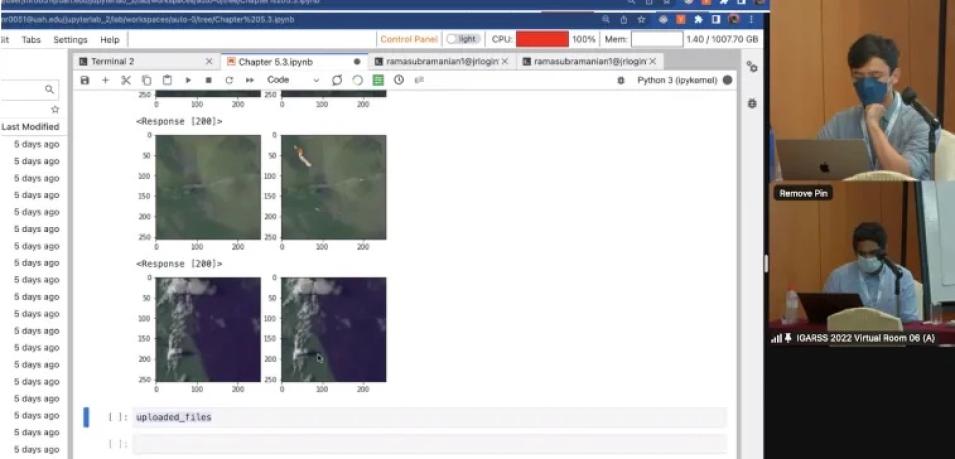Recently, IMPACT team members Muthukumarann Ramasubramanian (Kumar), Iksha Gurung, and Dr. Manil Maskey, alongside Dr. Gabriele Cavallaro and Rocco Sedona, conducted a tutorial on End-to-End Machine Learning with High Performance and Cloud Computing at IGARSS (International Geoscience and Remote Sensing Symposium) 2022.
The goal of the workshop was to educate scientists on best practices for training their ML (machine learning) model on HPC (high performance computing) workstations and using cloud technologies to infer from the trained models. The IMPACT team used the pixel level smoke detection from satellite images detection as a use case for the tutorial.
This tutorial has relevance for the IGARSS community because Earth science researchers generally end their machine learning modeling life cycle at the testing phase, in which they report model performance metrics in publications. This workshop highlights how they can move on to the next phase–large scale and on-demand inference of the machine learning models–using cloud computing.
Additionally, the tutorial presents a blueprint for researchers on the use of HPC clusters provided by universities and introduces networking and cloud computing concepts required to deploy a machine learning model at scale, making it readily available for inference; that is, making predictions based on new data.
